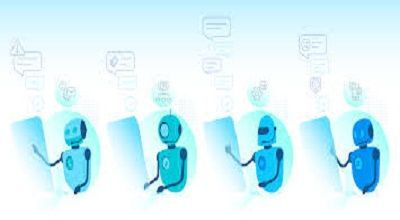The 4 types of chatbots
4 types of chatbots: A chatbot is a computer program designed to simulate conversation with human users, especially over the internet. Chatbots are typically used in customer service, online messaging platforms, and other applications to provide automated responses to user inquiries. They can be programmed to understand natural language input and generate appropriate responses.
Making them useful for tasks such as answering questions, providing information, and assisting users with various tasks. Chatbots can range from simple rule-based systems to more advanced models that use machine learning and natural language processing (NLP) to understand and respond to user input. Chatbots can be classified into various types based on their functionality and capabilities. Here are four common types of chatbots:
Rule-Based Chatbots:
- These chatbots operate on a set of predefined rules. They follow a decision tree or set of if-else conditions to respond to user inputs.
- Rule-based chatbots are suitable for handling specific and structured tasks. They cannot understand context beyond their programmed rules.
AI-Powered Chatbots:
- These chatbots leverage artificial intelligence (AI) and natural language processing (NLP) to understand user inputs and provide more dynamic and context-aware responses.
- AI-powered chatbots can learn from user interactions and improve over time. They are capable of understanding natural language and handling more complex conversations.
Scripted Chatbots:
- Scripted chatbots follow predefined scripts or scenarios to interact with users. These scripts are typically written by developers or conversation designers.
- While scripted chatbots may provide a more guided and controlled experience, they may struggle with handling unanticipated user inputs.
Contextual Chatbots:
- Contextual chatbots can understand the context of a conversation, allowing them to provide more relevant and personalized responses.
Benefits of chatbots
Chatbots offer several benefits across various industries and applications. Here are some of the key advantages:
24/7 Availability:
- Chatbots can provide round-the-clock support and assistance, allowing users to access information or services at any time, irrespective of time zones or business hours.
Cost-Effective:
- Automated chatbots can handle a large volume of inquiries simultaneously, reducing the need for human intervention in routine and repetitive tasks. This efficiency can lead to cost savings for businesses.
Instant Responses:
- Chatbots can provide instant responses to user queries, enhancing the overall user experience. Users appreciate quick and efficient interactions, and chatbots excel at delivering timely information.
Scalability:
- As the number of users or customer inquiries increases, chatbots can scale easily to handle the demand without a proportional increase in resources.
Consistent customer experience:
- Chatbots follow predefined rules or algorithms, ensuring consistency in responses. This consistency helps maintain a uniform and reliable customer experience across various interactions.
Task Automation:
- Chatbots can automate repetitive and mundane tasks, freeing up human resources to focus on more complex and value-added activities. This can improve overall productivity.
Data Collection and Analysis:
- Chatbots can collect valuable data from user interactions, providing insights into customer preferences, frequently asked questions, and areas for improvement. This data can inform business decisions.
Multitasking Capability:
- Chatbots can handle multiple conversations simultaneously, making them efficient in managing large volumes of inquiries without compromising on response times.
Personalization:
- Advanced chatbots with machine learning capabilities can analyze user behavior and preferences, allowing for personalized interactions. This personalization enhances user engagement.
Enhanced User Engagement:
- Interactive and conversational interfaces provided by chatbots contribute to improved user engagement. Users often find it more enjoyable and user-friendly to interact with a chatbot than to navigate through traditional interfaces.
Integration with Existing Systems:
- Chatbots can be integrated with existing software systems, databases, and platforms, enabling them to access and retrieve relevant information seamlessly.
Summary
These chatbots can remember previous interactions, making them well-suited for handling multi-turn conversations and providing a more natural user experience.
It’s worth noting that these categories are not mutually exclusive, and some chatbots may exhibit characteristics of more than one type. Additionally, advancements in AI and NLP technologies continue to influence the capabilities of chatbots, blurring the lines between these categories.
While chatbots offer numerous advantages, it’s important to design and implement them thoughtfully to ensure they align with the specific needs and goals of a business or application. Additionally, regular updates and improvements based on user feedback contribute to the long-term success of chatbot implementations.
